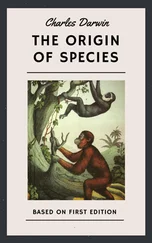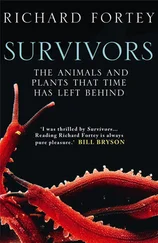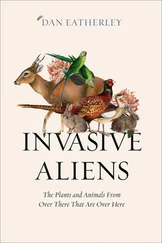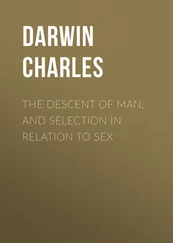Charles Darwin - The Variation of Animals and Plants under Domestication — Volume 2
Здесь есть возможность читать онлайн «Charles Darwin - The Variation of Animals and Plants under Domestication — Volume 2» — ознакомительный отрывок электронной книги совершенно бесплатно, а после прочтения отрывка купить полную версию. В некоторых случаях можно слушать аудио, скачать через торрент в формате fb2 и присутствует краткое содержание. Жанр: foreign_antique, foreign_prose, на английском языке. Описание произведения, (предисловие) а так же отзывы посетителей доступны на портале библиотеки ЛибКат.
- Название:The Variation of Animals and Plants under Domestication — Volume 2
- Автор:
- Жанр:
- Год:неизвестен
- ISBN:нет данных
- Рейтинг книги:3 / 5. Голосов: 1
-
Избранное:Добавить в избранное
- Отзывы:
-
Ваша оценка:
- 60
- 1
- 2
- 3
- 4
- 5
The Variation of Animals and Plants under Domestication — Volume 2: краткое содержание, описание и аннотация
Предлагаем к чтению аннотацию, описание, краткое содержание или предисловие (зависит от того, что написал сам автор книги «The Variation of Animals and Plants under Domestication — Volume 2»). Если вы не нашли необходимую информацию о книге — напишите в комментариях, мы постараемся отыскать её.
The Variation of Animals and Plants under Domestication — Volume 2 — читать онлайн ознакомительный отрывок
Ниже представлен текст книги, разбитый по страницам. Система сохранения места последней прочитанной страницы, позволяет с удобством читать онлайн бесплатно книгу «The Variation of Animals and Plants under Domestication — Volume 2», без необходимости каждый раз заново искать на чём Вы остановились. Поставьте закладку, и сможете в любой момент перейти на страницу, на которой закончили чтение.
Интервал:
Закладка:
From these facts we see that the crossing of the several equine species tends in a marked manner to cause stripes to appear on various parts of the body, especially on the legs. As we do not know whether the parent-form of the genus was striped, the appearance of the stripes can only hypothetically be attributed to reversion. But most persons, after considering the many undoubted cases of variously coloured marks reappearing by reversion in my experiments on crossed pigeons and fowls, will come to the same conclusion with respect to the horse-genus; and if so, we must admit that the progenitor of the group was striped on the legs, shoulders, face, and probably over the whole body, like a zebra.
Lastly, Professor Jaeger has given (13/39. 'Darwin'sche Theorie und ihre Stellung zu Moral und Religion' page 85.) a good case with pigs. He crossed the Japanese or masked breed with the common German breed, and the offspring were intermediate in character. He then re-crossed one of these mongrels with the pure Japanese, and in the litter thus produced one of the young resembled in all its characters a wild pig; it had a long snout and upright ears, and was striped on the back. It should be borne in mind that the young of the Japanese breed are not striped, and that they have a short muzzle and ears remarkably dependent.]
A similar tendency to the recovery of long lost characters holds good even with the instincts of crossed animals. There are some breeds of fowls which are called "everlasting layers," because they have lost the instinct of incubation; and so rare is it for them to incubate that I have seen notices published in works on poultry, when hens of such breeds have taken to sit. (13/40. Cases of both Spanish and Polish hens sitting are given in the 'Poultry Chronicle' 1855 volume 3 page 477.) Yet the aboriginal species was of course a good incubator; and with birds in a state of nature hardly any instinct is so strong as this. Now, so many cases have been recorded of the crossed offspring from two races, neither of which are incubators, becoming first-rate sitters, that the reappearance of this instinct must be attributed to reversion from crossing. One author goes so far as to say, "that a cross between two non-sitting varieties almost invariably produces a mongrel that becomes broody, and sits with remarkable steadiness." (13/41. 'The Poultry Book' by Mr. Tegetmeier 1866 pages 119, 163. The author, who remarks on the two negatives ('Journ. of Hort.' 1862 page 325), states that two broods were raised from a Spanish cock and Silver-pencilled Hamburgh hen, neither of which are incubators, and no less than seven out of eight hens in these two broods "showed a perfect obstinacy in sitting." The Rev. E.S. Dixon ('Ornamental Poultry' 1848 page 200) says that chickens reared from a cross between Golden and Black Polish fowls, are "good and steady birds to sit." Mr. B.P. Brent informs me that he raised some good sitting hens by crossing Pencilled Hamburgh and Polish breeds. A cross-bred bird from a Spanish non-incubating cock and Cochin incubating hen is mentioned in the 'Poultry Chronicle' volume 3 page 13, as an "exemplary mother." On the other hand, an exceptional case is given in the 'Cottage Gardener' 1860 page 388 of a hen raised from a Spanish cock and black Polish hen which did not incubate.) Another author, after giving a striking example, remarks that the fact can be explained only on the principle that "two negatives make a positive." It cannot, however, be maintained that hens produced from a cross between two non-sitting breeds invariably recover their lost instinct, any more than that crossed fowls or pigeons invariably recover the red or blue plumage of their prototypes. Thus I raised several chickens from a Polish hen by a Spanish cock, — breeds which do not incubate, — and none of the young hens at first showed any tendency to sit; but one of them — the only one which was preserved — in the third year sat well on her eggs and reared a brood of chickens. So that here we have the reappearance with advancing age of a primitive instinct, in the same manner as we have seen that the red plumage of the Gallus bankiva is sometimes reacquired both by crossed and purely-bred fowls of various kinds as they grow old.
The parents of all our domesticated animals were of course aboriginally wild in disposition; and when a domesticated species is crossed with a distinct species, whether this is a domesticated or only a tamed animal, the hybrids are often wild to such a degree, that the fact is intelligible only on the principle that the cross has caused a partial return to a primitive disposition. Thus, the Earl of Powis formerly imported some thoroughly domesticated humped cattle from India, and crossed them with English breeds, which belong to a distinct species; and his agent remarked to me, without any question having been asked, how oddly wild the cross-bred animals were. The European wild boar and the Chinese domesticated pig are almost certainly specifically distinct: Sir F. Darwin crossed a sow of the latter breed with a wild Alpine boar which had become extremely tame, but the young, though having half-domesticated blood in their veins, were "extremely wild in confinement, and would not eat swill like common English pigs." Captain Hutton, in India, crossed a tame goat with a wild one from the Himalaya, and he remarked to me how surprisingly wild the offspring were. Mr. Hewitt, who has had great experience in crossing tame cock-pheasants with fowls belonging to five breeds, gives as the character of all "extraordinary wildness" (13/42. 'The Poultry Book' by Tegetmeier 1866 pages 165, 167.); but I have myself seen one exception to this rule. Mr. S. J. Salter (13/43. 'Natural History Review' 1863 April page 277.) who raised a large number of hybrids from a bantam-hen by Gallus sonneratii, states that "all were exceedingly wild." Mr. Waterton (13/44. 'Essays on Natural History' page 917.) bred some wild ducks from eggs hatched under a common duck, and the young were allowed to cross freely both amongst themselves and with the tame ducks; they were "half wild and half tame; they came to the windows to be fed, but still they had a wariness about them quite remarkable."
On the other hand, mules from the horse and ass are certainly not in the least wild, though notorious for obstinacy and vice. Mr. Brent, who has crossed canary-birds with many kinds of finches, has not observed, as he informs me, that the hybrids were in any way remarkably wild: but Mr. Jenner Weir who has had still greater experience, is of a directly opposite opinion. He remarks that the siskin is the tamest of finches, but its mules are as wild, when young, as newly caught birds, and are often lost through their continued efforts to escape. Hybrids are often raised between the common and musk duck, and I have been assured by three persons, who have kept these crossed birds, that they were not wild; but Mr. Garnett (13/45. As stated by Mr. Orton in his 'Physiology of Breeding' page 12.) observed that his hybrids were wild, and exhibited "migratory propensities" of which there is not a vestige in the common or musk duck. No case is known of this latter bird having escaped and become wild in Europe or Asia, except, according to Pallas, on the Caspian Sea; and the common domestic duck only occasionally becomes wild in districts where large lakes and fens abound. Nevertheless, a large number of cases have been recorded (13/46. M. E. de Selys-Longchamps refers ('Bulletin Acad. Roy. de Bruxelles' tome 12 No. 10) to more than seven of these hybrids shot in Switzerland and France. M. Deby asserts ('Zoologist' volume 5 1845-46 page 1254) that several have been shot in various parts of Belgium and Northern France. Audubon ('Ornitholog. Biography' volume 3 page 168), speaking of these hybrids, says that, in North America, they "now and then wander off and become quite wild.") of hybrids from these two ducks having been shot in a completely wild state, although so few are reared in comparison with purely-bred birds of either species. It is improbable that any of these hybrids could have acquired their wildness from the musk-duck having paired with a truly wild duck; and this is known not to be the case in North America; hence we must infer that they have reacquired, through reversion, their wildness, as well as renewed powers of flight.
Читать дальшеИнтервал:
Закладка:
Похожие книги на «The Variation of Animals and Plants under Domestication — Volume 2»
Представляем Вашему вниманию похожие книги на «The Variation of Animals and Plants under Domestication — Volume 2» списком для выбора. Мы отобрали схожую по названию и смыслу литературу в надежде предоставить читателям больше вариантов отыскать новые, интересные, ещё непрочитанные произведения.
Обсуждение, отзывы о книге «The Variation of Animals and Plants under Domestication — Volume 2» и просто собственные мнения читателей. Оставьте ваши комментарии, напишите, что Вы думаете о произведении, его смысле или главных героях. Укажите что конкретно понравилось, а что нет, и почему Вы так считаете.












